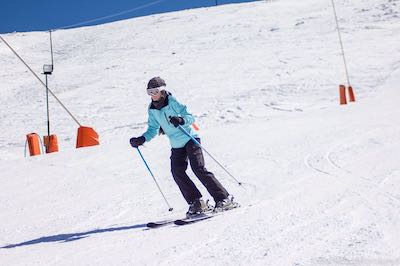The Lesotho winter falls at the opposite time of year to its northern hemisphere counterpart. The coldest months are June to August, though May and September tend also to have a wintery feel.
Lesotho experiences very cold winters by African standards, thanks to the combination of relatively high altitude and remoteness from the equator. In Maseru and the rest of the relatively low-lying west, temperatures on a typical June, July or August day would hit a maximum of 15-18°C and might well drop below freezing at night. Temperatures are typically around 5°C lower at medium-high altitudes. Sub-zero temperatures are the norm on the higher peaks of the eastern highlands.
Because Lesotho stands in a summer rainfall zone, precipitation figures over May to September are negligible, and parts of the country might go for weeks or months on end without a drop of rain. Most days are sunny throughout but, especially at higher altitudes, snow is very likely between June and August. Mist might reduce visibility in the mountains at any time of year.
 June to August is the skiing and snowboarding season at Afriski Mountain Resort, which operates a battery of snow cannons to supplement the natural snowfall during these months, thereby ensuring that its main 1km slope and two beginner slopes are always skiable.
June to August is the skiing and snowboarding season at Afriski Mountain Resort, which operates a battery of snow cannons to supplement the natural snowfall during these months, thereby ensuring that its main 1km slope and two beginner slopes are always skiable.
Popular outdoor activities such as Hiking, trail running, pony-trekking, mountain biking and abseiling can all be undertaken in Lesotho during winter, bearing in mind that it can be very chilly at night. The dry and cold conditions mean the winter countryside usually looks parched, frostbitten and hazy, though this is perhaps compensated for by unique wintery features such as frozen waterfalls and layers of snow. Outdoor activities in the lower-lying west are unlikely to be greatly disrupted by extreme weather but do bring plenty of warm and windproof clothing.
Fishing enthusiasts should avoid Lesotho over the midwinter months of June to August. This is the closed season when no fishing licences are issued. May and September do fall within the season, however, and both these months offer better conditions for fly-fishing than in the rainy summer months.
Winter cannot be considered a prime time for birdwatching. This is because several altitudinal and Palaearctic migrant species are absent, while the likes of weavers, bishops and widows sport their dull winter plumage rather than their brighter breeding colours of summer.
Winter is a good time of year to explore the country in a 4x4. The dry conditions mean there’s less chance of remote unsurfaced roads becoming impassable as a result of rain damage or swollen rivers. Black ice and snow are both a possibility, however, so drivers should ideally have experience in these hazardous conditions and vehicles should be suitably equipped.
